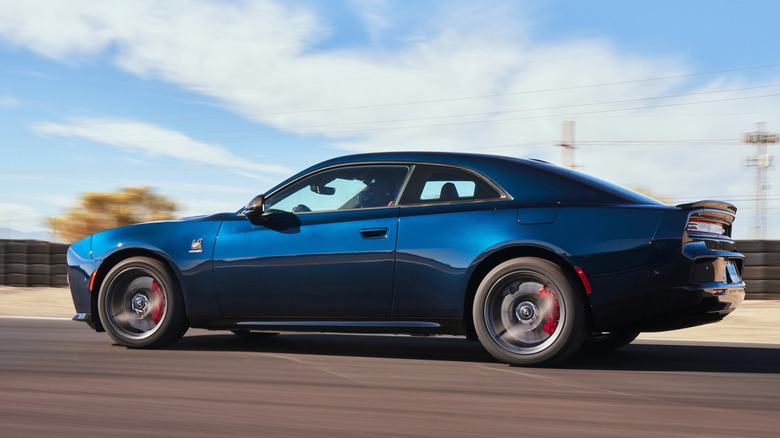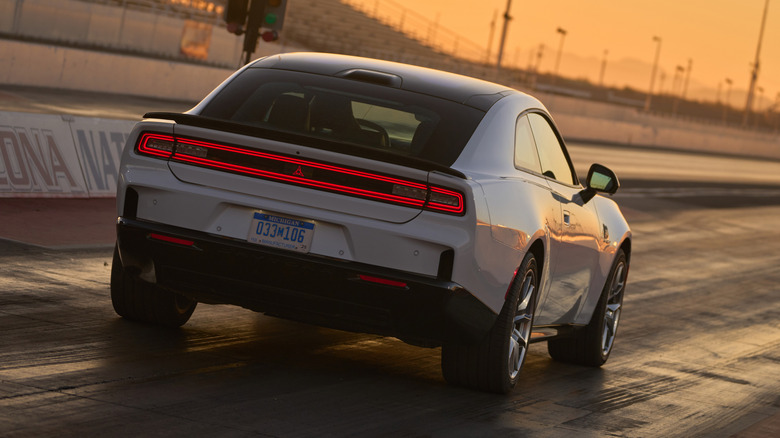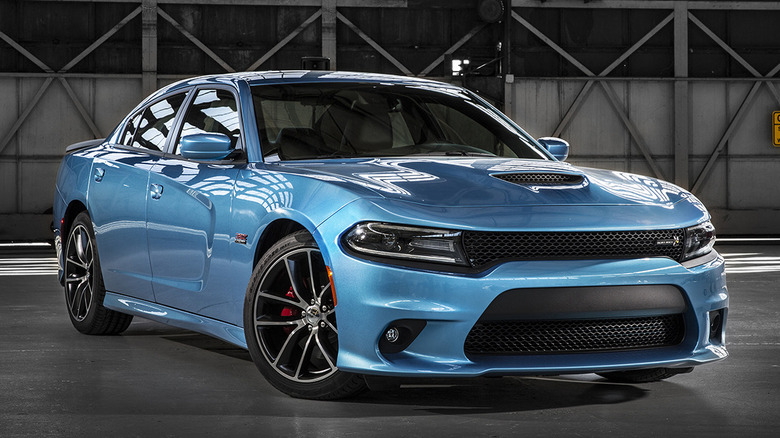Scat Pack 0-60: How Quick Are The Dodge Muscle Cars?
There are all sorts of performance packages and optional upgrades available for cars these days, but few are as well-known and iconic as the Scat Pack. Available on a number of different Dodge vehicles over the years, the Scat Pack designation generally signals some extra performance, and in the case of Dodge's newest all-electric Charger, that's definitely the case.
Replacing the old gas-powered Charger, the current 2025 model is all new and powered by 100.5 kWh battery. Muscle car fans and Dodge enthusiasts alike might share a bit of skepticism of the new cars, but as our First Drive of the electric Charger proved, they're still fast — no matter what you think of the switch to electric power.
According to Dodge, the base R/T version of the Charger can sprint to 60 miles per hour in 4.7 seconds and the Scat Pack can do it in 3.3 seconds — quick times when you consider that they both weigh nearly 6,000 pounds. But as it turns out, those estimates are dead-on accurate, at least when it comes to the Scat Pack. When Car and Driver tested the Daytona Scat Pack, it went from 0-60 mph just as quickly as Dodge said it would – 3.3 seconds. That sort of time puts it well ahead of most pedestrian EVs and in contention with some of the quickest cars on the road today.
Some stats on the current Dodge Charger Daytona Scat Pack
Muscle cars typically aren't laser-focused on lightweight performance, and the new electric Charger Daytona is even heavier than you might expect. Dodge's spec sheets put the standard Charger Daytona R/T's curb weight at 5,698 pounds, with the Scat Pack checking in at 5,767 pounds. The R/T moves that significant heft forward with 496 horsepower and 404 lb-ft of torque, but the Scat Pack adds significant extra power to pull around its extra heft. It puts out 670 hp and 627 lb-ft.
With both versions of the Charger Daytona, all-wheel drive is standard, helping to launch the EV muscle car in a hurry. If you feel like leaving some black tire-shaped marks on the asphalt, the Scat Pack also offers a Drift/Donut mode (yep, it's really called that) to send all the power to the rear wheels.
Gas-powered versions of the Charger are on their way later in 2025, but don't expect any big V8 grumbles coming from the exhaust pipes. The new gas-powered Charger will feature Dodge's twin-turbocharged 3.0-liter inline-six cylinder engine, which makes 550 horsepower on the top trim. Dodge refers to it as the Hurricane High Output engine. A less-powerful version of the six-cylinder will make 420 hp. Zero-to-60 times aren't available yet, and we don't know if there will be a Scat-Pack version of the gas-powered Charger. We expect the Charger to be quick, but it'll have a hard time keeping up with the Charger Daytona EV.
Scat Pack models from the combustion-only era
Along with tire-shredding models like the supercharged Hellcat and Hellcat Redeye, the Scat Pack name made a big mark in the previous generation of Challenger and Charger muscle cars. Back then, the Charger was a four-door sedan, and the Challenger was its two-door sibling. Now, the Charger is the lone remaining Dodge muscle car, with just two doors. On 2015 Dodge Chargers, an R/T Scat Pack was available that was powered by a 6.4-liter V8 that produced 485 hp and 475 lb-ft of torque.
In Car and Driver testing, the 2015 Charger R/T Scat Pack was capable of reaching 60 mph in just 4.1 seconds. A Challenger R/T Scat Pack was also tested and got to 60 mph in 4.2 seconds. Both times are slower than what the current electric-powered Scat Pack is offering, but purists will likely argue that the trade-off is worth it to stick with the old gas model.
Dodge went on producing Scat Pack models until 2023, when both the gas-powered models were discontinued. Rumors are currently swirling that Dodge is bringing back the V8, but the automaker hasn't confirmed whether or not that will be happening — let alone whether those motors will make it into the new Charger platform.


